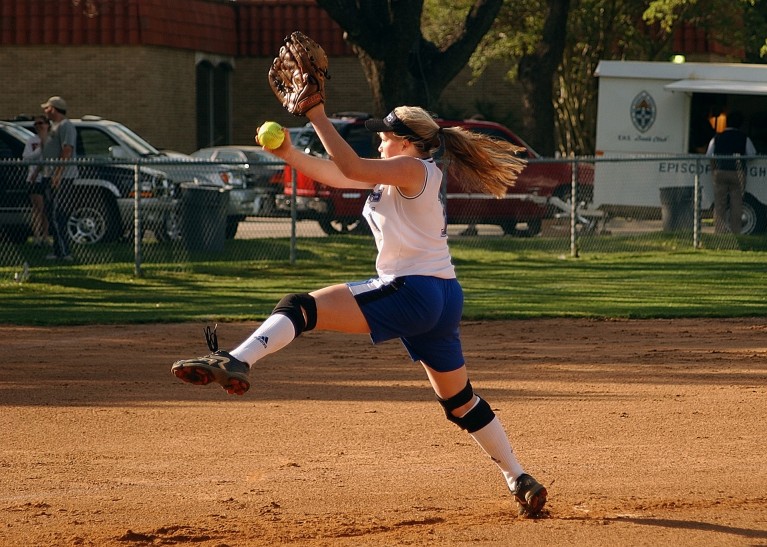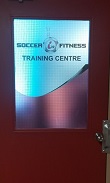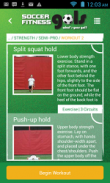How can it be that the professional athletes considered to have the world’s best “reaction times” cannot hit an underhand pitch travailing at 1/3rd the speed they are accustomed to facing?
There is woman in the United States that can strike out any Major League Baseball player. Easily. This is not a joke.
In The Sports Gene, a 2013 book written by David Epstein, the author discusses sport-specific anticipatory and reaction abilities, and how they apply to the learning of sports skills.
The pitcher in this instance is a United States National Women’s Softball player, Jennie Finch. She played some exhibition games in the early 2000’s where she pitched against top men’s baseball players like Albert Pujols, Mike Piazza, and Barry Bonds.
Although all of these players are expert hitters, who would be expected to possess exceptional “reaction” skills that allow them to routinely hit 100+ mph overhand fastballs in their own sport, none of them were able to hit Jennie Finch’s 50-60 Mph, underhand, softball pitches.
How can it be that the professional athletes considered to have the world’s best “reaction times” cannot hit an underhand pitch travailing at 1/3rd the speed they are accustomed to facing?
The reason Finch’s pitches are un-hittable for Major League Baseball players is not magic; it’s because men’s baseball players – even the elite ones – have no softball experience and, more specifically, no experience facing underhanded softball pitches.
Over time and through the accumulation of repetitive practice, Major League ballplayers have been exposed to hundreds of thousands of overhand fastball pitches. As a result, they have developed the ability to quickly and accurately predict where the ball will end up – to “anticipate” – at about the time the pitcher cocks his arm backwards.
If the same players waited until they could actually see where the ball from a fastball pitch would travel, and then try to “react” to it, the ball would already be in the catcher’s glove by the time they would have started their swing.
As a function of their training and experience, elite professional baseball players are able decide where and how they are going to swing at fastball pitches – again, to “anticipate” rather than to “react” – with enough time to actually hit the ball.
This unique anticipatory ability, which has been studied extensively in athletes from a variety of sports (Nuri et al., 2013, Muller & Abernathy, 2012), has been proven to be much faster and more developed in professional versus amateur athletes.
What this means is that elite athletes are able to “see into the future” far sooner than sub-elite athletes, and the extra time gained from this ability allows them to have a much higher success rate in performing sports skills.
Returning to the baseball example, because the elite men’s players mentioned earlier have never been exposed to underhand softball pitches, they have not accumulated enough experience to develop the ability to accurately predict where Finch’s underhand pitches will go quickly enough to react to them.
Their anticipatory skill – their ability to “see into the future” to predict where the ball will go – is very specific to the type of movements and plays they have been exposed to in their particular sport, and are not effective in softball. So, they strike out. Every time.
Results from many different research studies, across a wide range of sports, are always the same. The best professional athletes are able to predict – accurately – what is going to happen in their own sport before it actually happens, the majority of the time. The better they are at doing this, the more likely they are to win the play.
There are a few caveats, however. Firstly, elite athletes’ anticipatory skills in their own sport are often not transferable to other sports, unless those athletes are already at the “expert” level in their own sport. For example, a study conducted at Curtin University in Perth Australia demonstrated that both expert, near-expert, and novice Karate athletes were able to predict the outcomes of plays from Taekwondo (a similar sport), but only the expert Karate athletes were able to show similar anticipatory skills in Australian Rules Football.
Similarly, another study out of the School of Physiology and Exercise Science in Murdoch University in Perth, Australia, found that only expert Baseball players were capable of transferring their anticipatory skill to predict the ball delivery and speed in professional Bowling, as opposed to near-experts and novices.
Furthermore, and perhaps more importantly, expert athletes from every sport who were tested, including soccer, were not shown to have any significant differences in actual “reaction time” – the time taken from the perception of stimulus to the initiation of movement reacting to the stimulus – than either sub-elite athletes, or even from non-athletic members of the general population.
Thus, anticipation, and not reaction time, is the ability which separates the best athletes in the league from the rest; and it is also the reason than no Major League ballplayer will ever hit Jennie Finch’s underhand pitch.
Armed with this information, how can soccer coaches and fitness coaches train their athletes to improve sport-specific anticipatory skills?
The good news is that the answer is very simple – and it’s not through the use of fancy “reaction time” or “agility” drills.
Instead, players need to play their sport, or conditioned small-sided versions of their sport, as much as possible.
Through repetitive exposure to hundreds of thousands of instances in which sport-specific anticipation is required (for example, determining where a pass from a teammate or opponent will end up), players will develop and improve their ability to accurately predict what will happen, position themselves accordingly, and increase their chances of success.
In other words – the process of becoming an “expert” in sport in general, is also the way in which athletes can become experts in decision-making specifically.
When designing training sessions and exercises, coaches and fitness coaches should determine which anticipatory skills they would like to develop, and then select an appropriate exercise, training session, or game, with the appropriate conditions (field size, number of players, rules of the game, etc.) that will help bring out these skills.
If the goal of training in a team sport like basketball or soccer is to improve the ability to beat opponents off the dribble, use a 1 vs. 1 game with players attacking defenders head-on. On the other hand, If the goal is to improve the ability of attackers to post up, or dribble with their back facing the goal, then 1 vs. 1 games need to start with athletes receiving the ball from that position.
Eventually, through the accumulation of enough repetition and experience, players will improve their ability to accurately predict what will happen – to “see into the future” – and then to take the optimal action – to make a decision – which will give them the highest chances of success.
By structuring training in this way, your players will decrease the number of mistakes they make by improving their positioning and decision making. And your team will play better as a result.
____
Christopher, G. M., & Müller, S. (2014). Transfer of Expert Visual Anticipation to a Similar Domain. Quarterly Journal of Experimental Psychology, 67(1), 186–196. https://doi.org/10.1080/17470218.2013.798003
Nuri L, Shadmehr A, Ghotbi N, Attarbashi Moghadam B. Reaction time and anticipatory skill of athletes in open and closed skill-dominated sport. Eur J Sport Sci. 2013;13(5):431-6. doi: 10.1080/17461391.2012.738712. Epub 2012 Nov 12. PMID: 24050458.
Müller S, Abernethy B. Expert anticipatory skill in striking sports: a review and a model. Res Q Exerc Sport. 2012 Jun;83(2):175-87. doi: 10.1080/02701367.2012.10599848. PMID: 22808703.
Rosalie, S. M., & Müller, S. (2014). Expertise Facilitates the Transfer of Anticipation Skill across Domains. Quarterly Journal of Experimental Psychology, 67(2), 319–334. https://doi.org/10.1080/17470218.2013.807856
Photo Credit: Keith Johnston




